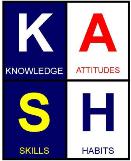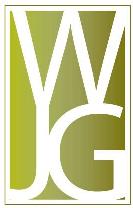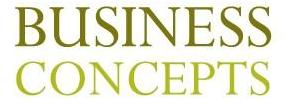
(Since we hate spam too we never share information.)
© 2010 WJG Business Concepts
As an Example:
If the strategy is to go to employee involvement, but recognition focuses only on individual achievement, there is a disconnect or misalignment which will have a negative impact on the implementation of that strategy. Therefore, one of the key elements of D.I.AL.O.G. is to measure the interrelationships of the various organizational systems in order to maximize the full potential of their talents and help prioritize which to address first.
We can also personalize the instrument by using the nomenclature for their organizational levels, their desired departmental satisfaction, and by placing your organization’s name on the instrument. The final report will show overall scores, responses by department, and by job level.
RAC’s Attribute Index
Discovering and Developing Human Capital for Success
Maximize Human Capital
Today, business success is measured in HUMAN CAPITAL¬¬- the RIGHT talent for the job! Lack of job performance and related employee turnover result in missed business opportunities and increased costs. Eventually this lowers the value of your company. It makes business sense that companies are now seeking better ways to accurately assess, develop, and retain top talent. Now there is a proven assessment that aligns with our processes that will assist you in these endeavors--- THE ATTRIBUTE INDEX.
DR. HARTMAN AND HIS WORK
The Attribute Index is based solely on the work of Dr. Robert S. Hartman. Dr. Hartman, a doctor of mathematics, philosophy, and law, was born in pre-World War II Germany where at the hands of the fledgling Nazi party he experienced firsthand the organization of evil on a massive scale. It was the Nazi party’s skill at organizing evil that led Dr. Hartman to postulate the question, “What is good?” He wondered how decent, honorable people could organize “good” in a similar fashion to combat such evil. From the first spark of wonder grew a life-long journey that led from wondering what is good to wondering how to classify good to seeking to understand how our brains work and finally to then understand how we perceive the world around us. To answer the questions scientifically he applied mathematics to the issue, and thus created a new science Axiology.
Follow this link for more information
WHAT IS THE DISC INDEX?
The DISC Index (DI) is the latest interpretation of Dr. William Marston’s foundational work in the field of behavioral science. The DISC model is the most used behavioral assessment in the world and DI is the most contemporary interpretation of this theory available on the market today. It brings with it many new and powerful features that differentiate it from other behavioral instruments. Some of these refinements include: increased reliability and validity, an easier-to-use testing interface, and more individualized or personalized content.
The DI helps people better understand their unique behavioral strengths and tendencies, and helps them become more effective in several key areas of their life, including but not limited to:
- Interpersonal and Intrapersonal Communication
- Goal Achievement
- Role Building
- Job Selection
- Performance Management
For more information, please follow this link.
What is the Values Index?
The Values Index (VI) is the latest interpretation of the work of Drs. Eduard Spranger and Gordon Allport and their study of human value, motivation, and drive. The VI is the most contemporary interpretation of these theories available on the market today. It brings with it many new and powerful features that differentiate it from other values-based instruments. Some of these refinements include: increased reliability and validity, an easier-to-use testing interface, and expanded dimensions to separate two historically merged factors into unique pieces.
The VI helps people to better understand their unique value hierarchy or belief system pertaining to what motivates them, what they are most drawn to, and where their passions lie. Such knowledge helps an individual become more effective in several key areas of their life, including but not limited to:
- Setting and achieving goals that are inspirational
- Creating roles that align well with motivations
- Job selection
- Performance management
The seven dimensions of values in the Innermentrix Values Index include:
- Aesthetic: A drive for balance, harmony and form
- Altruistic: A drive for humanitarian efforts or to help others altruistically
- Economic: A drive for economic or practical returns
- Individualistic: A drive to stand out as independent and unique
- Political: A drive to be in control or to have influence
- Regulatory: A drive to establish order, routine, and structure
- Theoretical: A drive for knowledge, learning, and understanding
For more information, please follow this link.
LOGISTICS OF GETTING STARTED
D.I.AL.O.G. was developed as a result of a search for an instrument that would help identify an organization’s strengths and identify areas for improvement using valid current criteria. It was also important that this tool be based on results rather than activity focused.
The search for valid criteria began as a result of our experience which provided us with an understanding that the true source of an organization’s strength lies in its ability to manage the interrelationships of the systems within an organization. It is of little value that there is a strong R&D department and a strong Marketing department if they are unable or unwilling to work together. The results are that the wrong things will be developed and adversarial relationships will work to the detriment of loyal customers and the bottom line.
Our experience also indicated that the more aligned the systems are with the strategy and mission of an organization the more successful it will be as measured by employee morale, productivity, customer loyalty, share of market, and profitability. Our search for the best researched criteria that would provide the best indicators of organizational strength lead us to the 7 elements of Performance Excellence as defined and measured by the National Institute of Standards & Technology, U.S. Department of Commerce. These categories have undergone an incredible amount of validation and verification. They have been documented by organizations of all sizes and in all industries. For these reasons we selected them as the basic criteria for the D.I.AL.O.G. Tool.
The 7 categories are, Leadership, Strategic Planning, Customer and Market Focus, Measurement, Analysis, and Knowledge Management, Workforce Focus, Process Management, and Results. To use them to evaluate an organization we have developed a total of 70 statements taking 15-20 minutes to complete. The responses from a cross section of the organization will produce a clear picture showing areas of alignment (strengths), and misalignment (opportunity). With this knowledge, management is in a better position to make informed decisions as to what should be strengthened, changed, and/or reinforced in order to provide long-term strength. As such, this instrument becomes a powerful organizational development, strategic, and tactical leadership tool, providing valid information as to where to best focus resources to maximize results.
Our approach in working with an organization is to understand how they currently function, identify where they want to go, and evaluate the “gaps” and misalignments of what needs to be done in order to accelerate the accomplishment of their goals. We used to say that an organization’s strength was greater than the sum of its parts. We called this synergy. While this is still true, today we have kicked that thought process up a notch. Now we say, the output (results) of an organization is a consequence of the interrelationship of the pieces. (The “Star Model,” Strategy, Structure, Processes, Recognition, and People with Customer/Results in the center explains how change in one element has an effect on the others, and how if an organization is to grow, they must support one another, i.e. be in alignment.)


